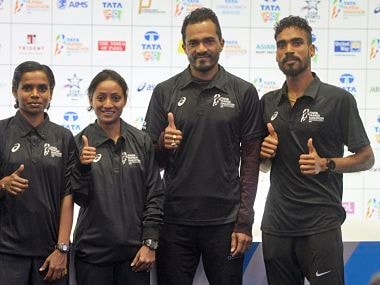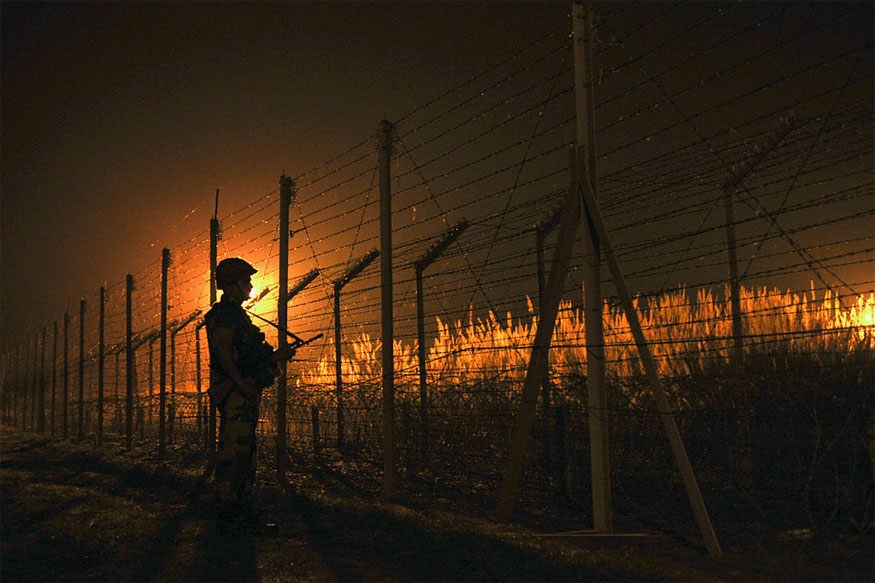Editor's note: Beginning 15 October 2017, we're running a new series called 'By Design' that looks at Indian cities from the perspective of urban design. How can design make the quality of life in India cities better? How can the architecture of our infrastructure prevent life-threatening situations like flooding, or rush-hour stampedes? What solutions can simple design changes offer to monumental urban problems? We'll be discussing all this and more, in 'By Design'.
It is said that a dispatch runner called Pheidippides sprinted from Marathon to Athens with the news that the Athenians had won the Battle of Marathon, fought against the Persians in 490 BC. Pheidippides, an Athenian hemerodrome (day runner or courier) is believed to have run 40 kilometres from the battlefield to Athens, and proclaimed the victory of the Greeks over Persia with the word “Nikomen!” or “We Win!” before falling to the ground and dying.
Pheidippides finds a mention in The History, written in 440 BC by Herodotus, also celebrated as ‘The Father of History’, a title conferred upon him by Marcus Tullius Cicero. Book Six of The History (translated by David Grene) refers to him so:
“First of all, when the generals were still within the city, they sent to Sparta a herald, one Phidippides, an Athenian, who was a day-long runner and a professional.”
The marathon, introduced in the modern Olympic events of 1896, derives its name from Pheidippides’ legendary run. Its official distance of 42.195 kilometres was standardised in 1921.The ancient games at Olympia, however, had running events that were the equivalent of a 200 metre dash. In fact, the first and only event at the inaugural Olympiad, held in 776 BC, was a foot race called the stade – one length of the stadium track (around 192.27 metres at Olympia).
“Victory by speed of foot is honoured above all,” declared the sixth century BC philosopher, Xenophanes. Both ancient Greek runners and their modern counterparts vied for glory with their feet. The Tata Mumbai Marathon 2018, held today, is perhaps a commemoration of the vigour and spirit of the ancients, also delineated by Homer in his epic poem, 'The Odyssey', composed towards the end of the eighth century BC:
“A course was marked out for them from the turning point, and they all sped swiftly, raising the dust of the plain, but among them noble Clytoneus was far the best at running…he shot to the front and the others were left behind.”
The fifteenth edition of the Mumbai Marathon, like other marathons in cities around the world, is also a celebration of the host city. Mumbai is the bone and sinew of this particular event, which is one of the top ten marathons in the world. Mumbai – with its towers and sea link and jewelled drives and suburbs – is the stretch its runners must negotiate, their bodies arching forward, their arms swinging. Mumbai is the road; it is also the destination.
The marathon, commencing opposite the Chhatrapati Shivaji Maharaj Terminus, is a photo gallery of the city’s iconic buildings, beaches, churches, mosques, roads and junctions. It is the bustle of Chowpatty, the grandeur of Haji Ali dargah, the fragile antiquity of Flora Fountain, the cable-stayed modernity of the Bandra-Worli Sea Link. It is also a harbinger of peace in a city whose entrails have been gutted by violence. In the words of Vivek Singh, joint managing director of Procam International, the sports management company that promotes the marathon, it is “a panacea” for all that ails modern societies.
“The Mumbai marathon brings several local bodies together – the police, the municipal corporation, the railways, various NGOs – each has to work with the other for the race to take place smoothly,” explains Singh. Seamless coordination between the governing bodies of city can galvanise the often rusty machinery of a State’s infrastructure. There are other changes a marathon can bring about in the tenuous bond between communities. It is, for instance, an emblem of communal harmony and egalitarianism. “The road recognises no caste, nor religion, nor age, nor gender. Corporate czars, celebrities and the common man or woman run side-by-side,” Singh affirms.
The marathon also provides a vivid backdrop for non-governmental organisations to draw attention to their work in the areas of health, human rights, disability, community development, vocational training and a variety of other humanitarian causes. Fundraising is a vital component of the event – the Mumbai Marathon has raised over 1.9 billion (USD 29 million) from 2004 (when the marathon began and was titled the Standard Chartered Mumbai International Marathon) to 2017.
The participative nature of the marathon encourages citizens to train for several months before the event, and thereby adopt healthier lifestyles. “This is not a spectatorial sport; it prompts people to change their lifestyle and to take fitness seriously,” Singh elaborates, reaffirming that the Mumbai Marathon portrays the spirit of Mumbai, “Mumbaikars run a marathon every day, from home to work and back. This marathon is a tribute to that daily struggle.”
The logo too, hails the city of Mumbai and its cosmopolitanism. Designed by Khalid Khatri of Infectious Design, the logo is the map of Mumbai, with the shape of a running man emerging from the negative spaces around the seven islands of the city. “The city’s map looks uncannily like a man who is running, and we decided to hightlight that shape,” explains Ramanuj Shastry, co-founder and partner at Infectious Design. Shastry, who runs in the Bandra-Khar neighbourhood every morning, describes the exercise as “a form of meditation – one really has to concentrate on one’s breathing, posture and the road ahead.” He also admits to being constantly surprised by an area he is seemingly familiar with, “I sometimes chance upon little chapels and by-lanes that I didn’t know existed.”
Marathons then, are scruffy, sweaty, tense-muscle odes to the city. The London Marathon –the race that inspired Procam International to initiate a marathon in Mumbai in 2004 – is run around the River Thames. It begins at three separate points around Blackheath – the ‘red start’ in Greenwich Park, the ‘green start’ in St John’s Park, and the ‘blue start’ on Shooter’s Hill Road. Runners pass by the Old Royal Naval College, pass the Tower Bridge, reach Canary Wharf, and finish in The Mall alongside St. James’ s Palace. The route has undergone a few changes since the first marathon, held on March 29, 1981. Now called the Virgin Money London Marathon, the race is about the city’s unflagging spirit, as much as it is about physical endurance and strength.
The New York City Marathon, now branded the TCS New York City Marathon, was first held in 1970, and has grown to become the largest marathon in the world. Organised by the New York Road Runners, it led to the founding of the London Marathon. After completing the New York City Marathon in 1979, Christopher William Brasher, former sports editor of The Observer wrote in the paper:
“To believe this story you must believe that the human race can be one joyous family, working together, laughing together, achieving the impossible.
“Last Sunday, in one of the most trouble-stricken cities in the world, 11,532 men and women from 40 countries in the world, assisted by over a million black, white and yellow people, laughed, cheered and suffered during the greatest folk festival the world has seen.
“I wonder whether London could stage such a festival? We have the course, a magnificent course…but do we have the heart and hospitality to welcome the world?”
Brasher went on to institute the London Marathon with Welsh athlete John Ivor Disley. The Mumbai Marathon, an offshoot of this grand lineage, is perhaps a reminder that the city offers a path to those who step out and embrace it. It is also a reminder that a citizenry is capable of great accomplishment, and genuine kindness, even as it competes to reach the finishing line of a race.
Published Date: Jan 21, 2018 08:05 AM | Updated Date: Jan 21, 2018 08:40 AM




















